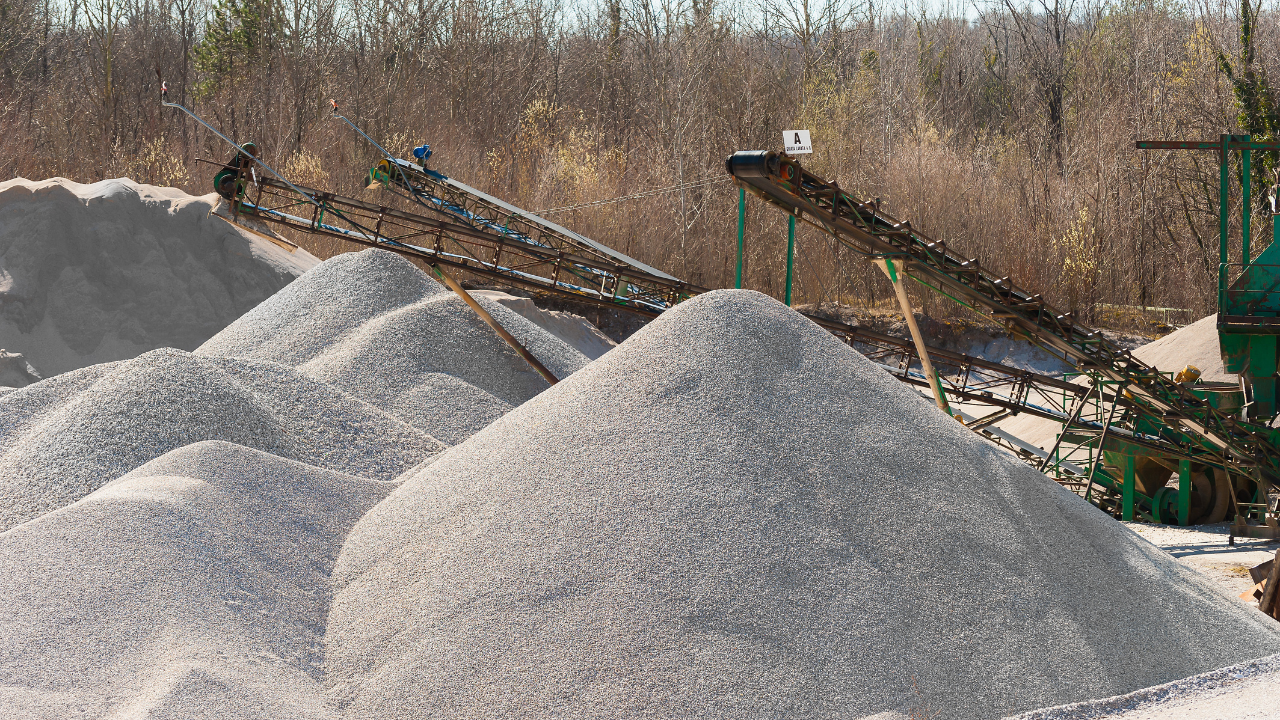Construction projects need high-quality sand to create solid bases and produce lasting concrete for roads. A proper sand production system converts raw materials through multiple steps to yield dependable top-quality sand. An aggregate plant runs operations that transform materials efficiently with precise results.
Sand production starts with choosing suitable materials before processing them through multiple crushing and washing steps. Every production step shapes the sand until it becomes ready for construction, road work, and industrial use. The latest technologies and production methods increase our efficiency while reducing waste and meeting all industry requirements. This process shows the path that raw materials take to become vital parts of today’s infrastructure.
Understanding the Raw Materials Used in Aggregate Processing
Sand production begins by selecting raw materials that match the required quality requirements. Sand is made from multiple materials, including river pebbles, granite, limestone and iron ore. Material properties such as hardness, moisture, grain size, and shape affect the sand production process. Granite yields strong sand output, but limestone generates sand with better handling properties.
Companies mine raw materials according to strict environmental standards. Using sustainable extraction techniques protects our natural resources and provides a regular product stream. Quality selection and raw material preparation enhance production efficiency, which leads to fewer waste products and better results.
Key Stages in the Aggregate Processing Workflow
The transformation process turns raw materials into sand through multiple production steps. Large rocks first enter jaw crushers to break them down into smaller pieces. These machines use strong pressure to split large rocks into smaller pieces. After primary crushing, the process moves to cone and impact crushers for finer output. These processes create uniform particles and prepare the material for the upcoming stage.
The sorting system divides materials by their dimensions. Vibrating screens eliminate large particles while letting smaller grains reach the sand-making section. The VSI sand-making machine transforms raw material into consistently smooth sand particles. Cleaning and washing processes remove dirt and clay particles to achieve cleaner sand. The team performs a final inspection to verify that every product matches industry requirements before sending it to market.
Essential Equipment in an Aggregate Plant for Sand Production
You need specific machine types to produce efficiently. The vibrating feeders maintain materials moving into crushers at a consistent rate to avoid blockages and maintain steady processing. Jaw crushers start the size reduction process, but cone and impact crushers further grind the materials into smaller bits. VSI sand-making machines improve particle form and quality to deliver superior results.
Vibrating screens sort sand into multiple sizes, while sand washing systems eliminate silt and dust from the sand. Belt conveyors ensure continuous operations by transporting the materials from one area to another. That means fewer interruptions and lower maintenance expenses because well-maintained equipment works better and lasts longer.
The Role of Process Optimization in Sand Quality
Running production better helps sand manufacturers create higher-quality end products. Changing crusher settings gives you better control over your particle size ranges, which leads to product standardization. Controlling moisture levels during processing keeps the material properly compacted while avoiding fine particles.
Advanced monitoring technology supports automated systems, producing better results and preventing mistakes. Computerized monitoring systems measure equipment performance and adjust settings to achieve optimum efficiency. Operating equipment at optimal speeds saves energy while producing more products, reducing overall expenses. The optimized process delivers a consistent sand output that meets various industrial demands.
Environmental Considerations in Aggregate Sand Production
Sustainable sand production helps protect our environment. Water sprays and sealed processing equipment help prevent dust from entering the air. A water recycling system helps preserve natural resources by using recycled water to clean sand during processing.
Running energy-efficient machines helps both the planet and our bottom line as they produce less carbon emissions. Following environmental rules helps companies mine responsibly and protects nature. Companies that use environmentally friendly methods help keep resources available for future use and follow industry standards.
Challenges and Solutions in Sand Production from Aggregate Plants
Creating quality sand involves several difficult problems. Different raw material qualities impact how processing plants work and require special crushing or screening methods. By controlling extra-fine particles, producers avoid wasting material.
Durable equipment becomes necessary to maintain regular operations. Routine maintenance keeps equipment working so operations flow without interruption. Achieving industry sand requirements demands exact control throughout production steps. Regular quality checks and process tracking systems deliver constant high output. These challenges need to be solved to make our sand production more effective and reliable.
Conclusion
Setting up raw materials to create high-quality sand requires an organized manufacturing sequence. Aggregate plant systems turn basic raw materials into construction-ready sand for both construction and industry needs. Controlling equipment performance, managing the environmental footprint, and performing process operations improve the quality of your final products.
Advanced technology and sustainable practices will continue to improve sand production. Strategic investments in advanced technology and sustainably sourced materials enhance production efficiency and protect resources for future use. Studying this production system reveals how sand makes modern construction projects possible.

